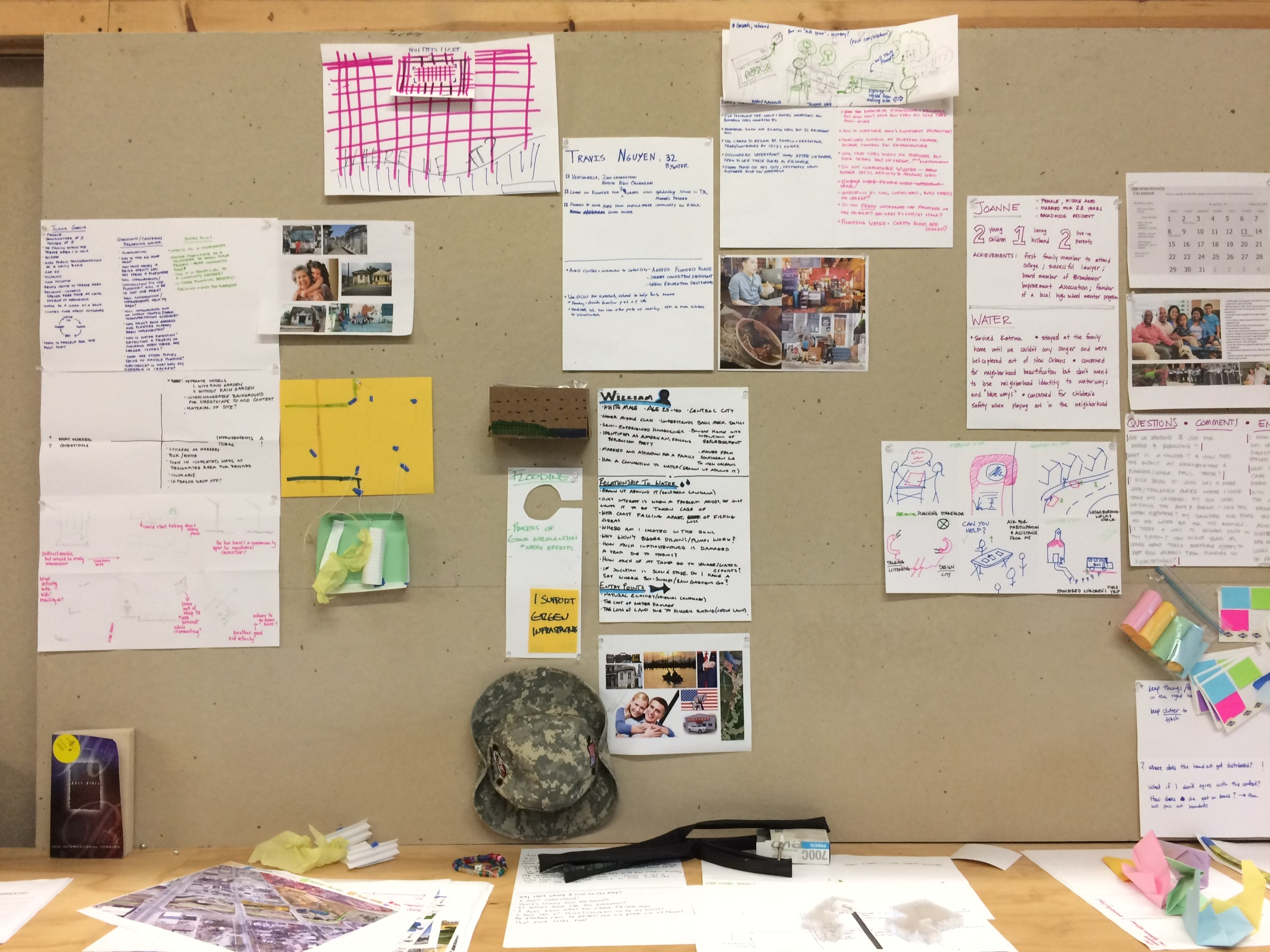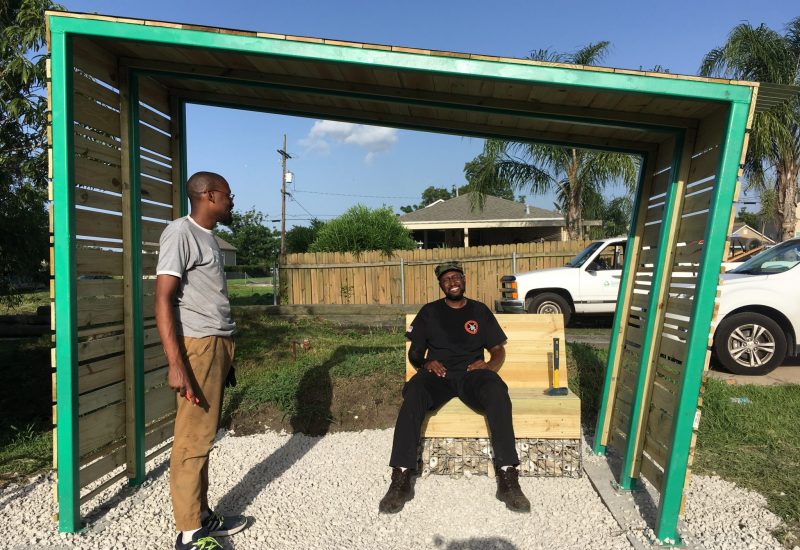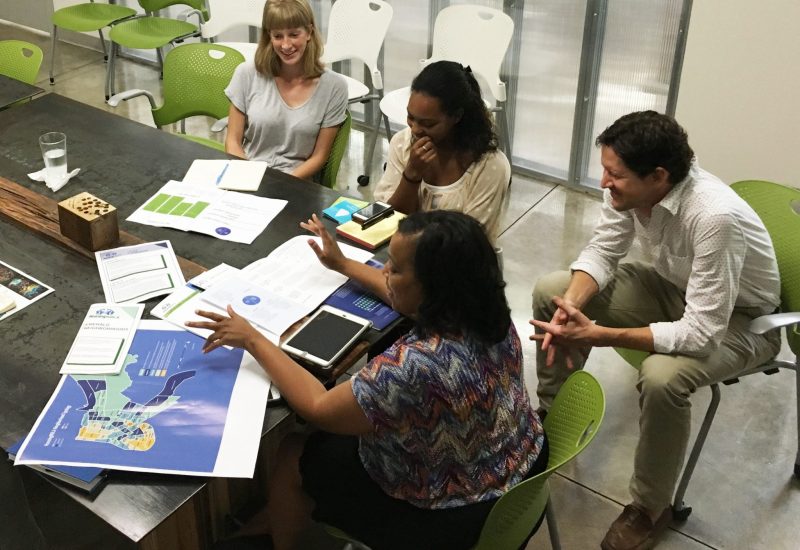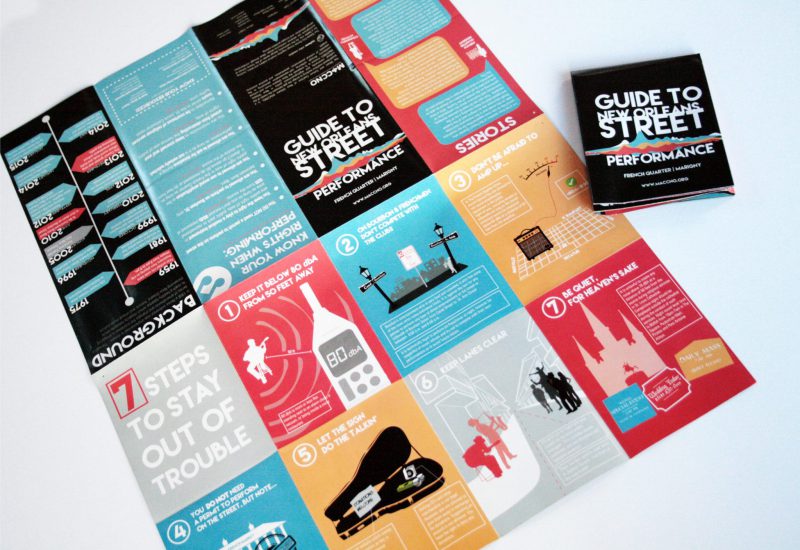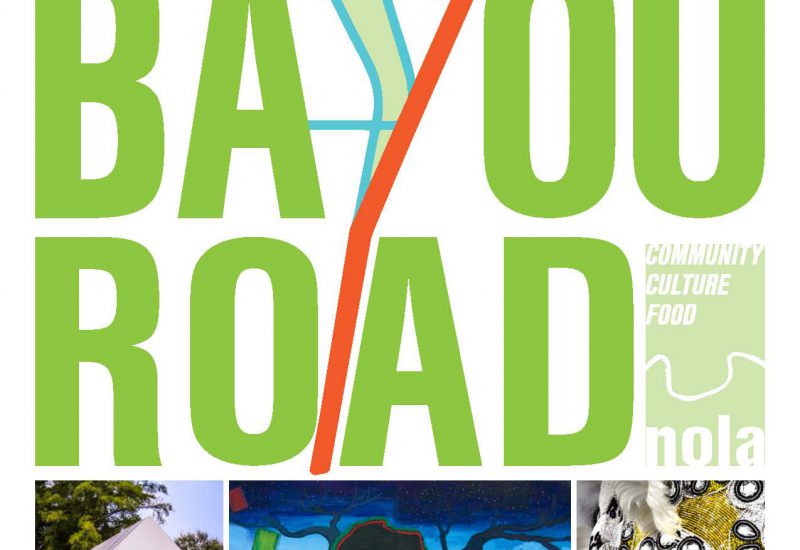Stormwater Management: Community-based Planning and Design
Small Center developed prototypes of interactive community engagement tools in support of neighborhood-scale water management projects.
Project Dates
June 2017–July 2017
Context
Greater New Orleans faces ongoing sea level rise and climate change and continued coastal land loss, while the August 2017 rainfall events and extensive street flooding affected thousands of New Orleans residents, and served as this year’s reminder of the many risks that this region’s citizens face day to day, even within the levees. At the same time, our frustration with the state of catch basins and pump stations, strident campaigns to “fix my streets!” in response to broken roadways, the advent of funding for resilience projects such as the $141 million Gentilly Resilience District, and $2.4 billion in FEMA dedicated to road repairs in the coming years suggest that finding a way to build infrastructure and water planning around community-based processes is imperative if we are to thrive as a region.
Small Center Engagement
During the Summer 2017 Public Interest Design Fellowship, the co-director of Ripple Effect, Aron Chang, led the fellows in researching stormwater management systems in New Orleans, conventional community engagement practices, and ways community engagement can be reframed and strengthened to support broader and deeper engagement in the planning and design of neighborhood stormwater infrastructure. Through a critique of present-day community engagement practices, case study research, visits to infrastructure and project sites, and meetings with stakeholders, the fellows built a base of knowledge and developed design proposals, case studies, and prototypes of interactive community engagement tools for neighborhood-scale projects.
Partner Organization
Ripple Effect is a community of teachers, water experts, and design educators working to establish water literacy in schools. Ripple Effect creates standards-aligned and design-based learning experiences that connect to real places.
Outcome
Over the course of two weeks, fellows created the following: Design Proposals, Case Studies, Prototypes of Interactive Community Engagement Tools. Fellows presented these products to a range of stakeholders so that they could provide feedback and help us test the tools that we are creating. These stakeholders include public agencies, nonprofits, residents, community engagement experts, and other designers. The goal was for the fellows’ work to help expand the collective understanding of the role that each citizen can play in determining the residents, community engagement experts, and other designers. The goal was for the fellows’ work to help expand the collective understanding of the role that each citizen can play in determining the ways in which water flows through the city, and in defining what “living with water” means for them and their neighbors.
Collaborators
Ripple Effect
- Aron Chang (Design Lead)
- Kristen Hill (Design Education Intern)
Blue House
- Gilad Meron
Water Collaborative of Greater New Orleans
- Nathan Lott
Urban Conservancy
- Dana Enness
- Felice Lavergne
Team Members
Students
- Ana Sandoval Aguilar
- Kekeli Dawes
- Carolyn Isaacson
- Christie Melgar
- Ryan Shabaan
- Kelsey Willis
- Julian Tricamo-Palmer
Staff
- Shoshana Gordon
- Maggie Hansen
- Nick Jenisch
- Sue Mobley
- Donn Peabody
- Emilie Taylor Welty
Support
- Eskew+Dumez+Ripple
- Morris Adjmi
- The Sizeler Family
Special Thanks
- Miriam Belblidia
- Claire Bourseleth
- Geneva Coleman
- Dana Eness
- Felice Lavergne
- Nathan Lott
- Tanya James
- Alex Miller
- Chuck Morse
- Matt Rufo
- Jennifer Roberts
- Nick Satterfield
- Shreya Subramani
- Bridget Tydor


 Menu
Menu

